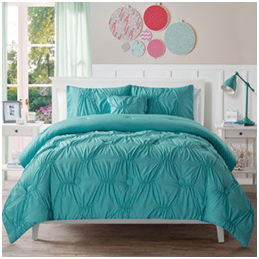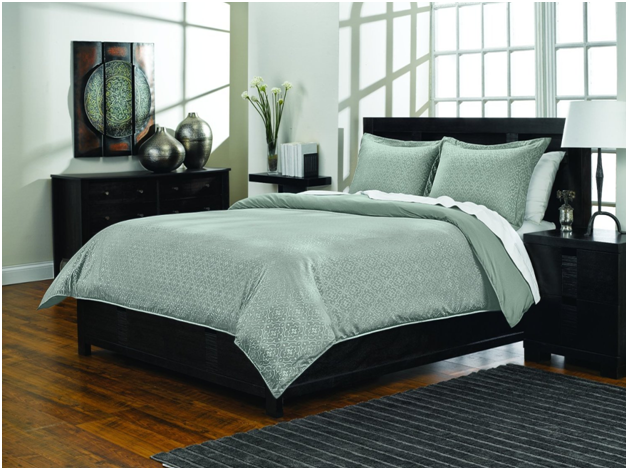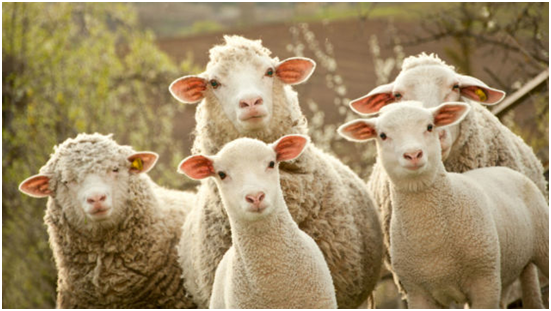At some point in your life you probably had a memorable blanket, whether you were a kid dragging it around for hours at a time, or an adult who simply could not resist the guilty pleasure of a true goose down comforter. Our bedding is important. Because we sleep one third of our lives, our bedrooms should reflect a calm retreat. Often bedrooms are the last to get décor preference, the doors are simply closed. Bedding is not expensive, and can be vital to not only a good night’s sleep, but to how the tone for the day is set upon waking.
Insulation for comforters can be a variety of different fillings. Goose down comforters still reign as the ultimate experience in bedding, and new synthetic blends are being created all the time. How do you know what you like? While a superior down comforter will provide the coziest and warmest of all nights, if you have allergy sensitivities or live in a warm climate, this may not work for you. If your body temperature is always cold side, a down comforter may be dream bedding you require.
The Magic of Down
The biggest misconception about down insulation it is made from the ‘feathers’ of a bird. Down is the plumage underneath the exterior feathers on geese and ducks. Those soft, delicate, wispy filaments are incredibly perfect for fillings.
Down insulates by trapping air, and is known for the lightness, and for being long-lasting. When saving space is a concern, down comforters can be compressed easily. It is the prized choice of bedding among consumers who live in colder climates. The fill power is a term used to measure the down’s ability to trap heat and loft. Premium goose down reaches a very high fill-power whereas duck down is considerably less.
Moisture is the enemy of down. The most common criticism is down’s tendency to clump or lose loft due to moisture. However, in the last few years technologies are being advance to treat down filling with a water-resistant application.
- Pros: Higher warmth-to-weight ratio, very compressible, incredibly durable with proper care
- Cons: loses insulating ability when wet, takes a long time to dry, more expensive, some not hypoallergenic and could require special care
Keeping up with Synthetics
Synthetic insulation is a high performance, low cost alternative to down. Technology has brought some superior fillings to the bedding industry. Polyester microfiber is quick-drying and still insulates well even after getting wet. It is quite durable and hypoallergenic.

The confusion around synthetics comes from competing brand names, and makes shopping for a comforter more difficult. How to combat this is to know whether a synthetic insulator is short-staple or if it is a continuous filament.
Comforter fillings which have short-staple insulations feature really short strands of fine-denier filaments which are packed tight to minimize heat loss. This gives flexibility and softness to comforters. The short-staple filaments are less durable than a continuous filament. The filling can also shift creating cold spots in the comforter. Continuous-filament fillings use a thicker filament which is durable, lofty and strong. These comforters will have a stiffer feel, and they are less compressible than others.
- Pros: Very water-resistant, insulates even when wet. Less expensive, hypoallergenic
- Cons: Heavier and bulkier than down, less warmth for the weight, less durable than down.
The Down/Synthetic Blends Compromise
Many manufacturers are making bedding with a combination of water-resistant down, hypoallergenic, and synthetic insulation in mind. This is a hybrid construction which can provide the benefits of down and synthetics while limiting each one’s imperfections.
- Pros: lighter weight, more compressible, water-resistant, less expensive
- Cons: heavier than down alone, less water-resistant than synthetics alone, more expensive than synthetic alone.
Shopping for a great comforter will depend on personal preferences. Technology is always coming out with ways to improve fabrics and fillings to make them more user-friendly. Depending on your climate, your desired room temperatures, and how much you want to spend, are all factors to consider as you look for your bedding. Down is not as budget wise as any synthetic comforters and typically comes in a crisp neutral color. Yet, a down comforter is going to be a solid investment which holds up over time.
Synthetic materials will wash well, even though they will need to be replaced sooner than a traditional goose down comforter. Allergy concerned individuals will gravitate more towards synthetic alternative down comforters. Synthetic comforters have more vivid colors, styles and patterns. With a down comforter, a duvet cover is the main way to up the color and décor of the bedroom.



